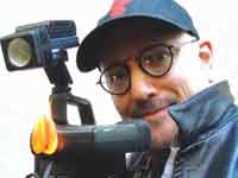The ad campaign for “Lady in the Water” was a noble attempt at marketing a movie using wit, taste and style. But as Scott G notes, the low turnout for the film’s opening weekend may make things a little less subtle in the future.
 For a few weeks, it was nearly impossible to escape the onslaught of marketing for M. Night Shyamalan’s “Lady in the Water.” There were commercials, posters, and ads. Bus boards, outdoor boards, and more commercials. Internet postings, talk show appearances, and still more commercials.
For a few weeks, it was nearly impossible to escape the onslaught of marketing for M. Night Shyamalan’s “Lady in the Water.” There were commercials, posters, and ads. Bus boards, outdoor boards, and more commercials. Internet postings, talk show appearances, and still more commercials.
Unlike some Hollywood marketing efforts, this one appeared very well-coordinated. For example, the same eerie-but-oh-so-delicate artwork was used in all the visuals, as opposed to the usual movie studio practice of hiring several firms to develop different images for each medium.
Confession
To tell the truth, I loved the posters and ads. The intricate painting of Bryce Dallas Howard’s porcelain face with the slightly exaggerated primeval elements floating around her head seemed striking and inviting. Best of all, the image suggested being underwater yet as dry as a freshly-restored Renaissance painting in a museum.
Then The Film Opened
From the standpoint of the distributor, putting the film onto 3,235 screens was a big “oops.” They would have done better to offer it as a one-night pay-per-view event and special edition DVD. (Yes, hindsight is always a wonderful thing.)
I will not say that Manoj Night Shyamalan miscalculated with “Lady in the Water” because, after all, his movies proceed at their own stately pace and you either give yourself over to them or you don’t. It’s just that tens of millions of people were willing to do so with “The Sixth Sense,” “Unbreakable,” “Signs,” and “The Village,” while only about three million did so on “Lady’s” opening weekend.
It may be a great movie. I won’t know until it appears on HBO, Showtime or TMC. But it was a great-looking marketing campaign. And the media buy made certain that every potential filmgoer knew about the film. It just didn’t convince many of them to attend the theaters.
Campaign in Vain
Is the poor showing of “Lady” partly the campaign’s fault? It could be argued that Paul Giamatti and Bryce Dallas Howard are not the boxoffice draw of the stars of his prior films. It may be that the marketing was too good for its own good (not enough screaming, loud slashing sound effects, etc.) Or it could be that something very strange happened: the American public all of a sudden decided to read the reviews.
Whatever the reason, what is now going on with that beautiful ad campaign? Well, it is undergoing some revisions. Images that were subtle or nearly hidden, like the “big bad wolf” in the tale, are now occupying more space in the ads. Even the face-saving full-page newspaper ads in the Los Angeles area have “more monster” in them.
Which is a monstrously large shame. But as one studio executive said, “Whataya gonna do? It happens all the time.” True enough.
Selling a Second Time
I have worked on home video or DVD campaigns for quite a few films. Some had succeeded at the boxoffice, like “Silence of the Lambs.” Some were perennial favorites like Disney’s “The Rescuers.” But the interesting creative challenges were the films that failed to find an audience when initially released.
Like “Valmont.” Don’t remember that one? Yeah, nobody does. That was director Milos Foreman’s 70mm version of “Dangerous Liaisons,” which brought in at least one million dollars in domestic boxoffice receipts. I believe some ad teams re-do the art work and title graphics on that one every couple of years.
The point is that marketing can be a fluid industry. Less science than art. Less art than craft. And sometimes, there just isn’t room for a “Lady.”








